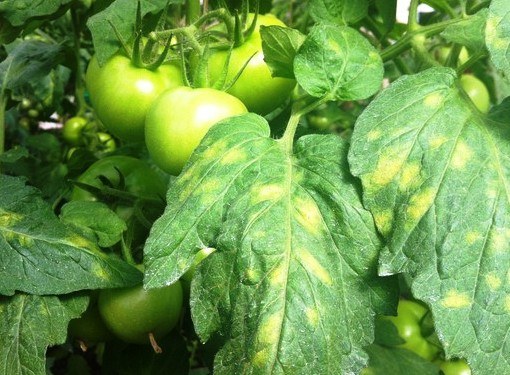Instruction
1
The first reason may be the incorrect operation of the root system. This happens most often with seedlings in pots or when planting overgrown seedlings in the ground. Tomatoes like a lot of space and quickly build up the roots. If the volume of soil in the pot is insufficient, the seedling grows, the roots densely entwine earthen and when planted in the soil begin to actively grow the young roots. Old leaves turn yellow, because all the power goes to the formation of roots. Seeds should be planted in the container medium in size and planted in the ground, when the ground ball is not yet fully braided roots.
2
Hypothermia is the second cause of yellowing leaves. It can be as hypothermia green parts of the plant and soil. He disrupted the root food. All the leaves on the stem acquires a yellow tint with blue. This can impact negatively on plants at any phase of development. Therefore, fluctuations in temperature when growing tomatoes it is better to avoid.
3
Root damage that can occur when transplanting seedlings or when loosening can also cause staining of the lower leaves of tomatoes to yellow. In order that the yellowing is gone, the plant needs time to grow new roots and leaves. Then the green coloring of leaves usually is restored.
4
Yellowing of foliage of tomatoes can react to the lack of moisture. Tomatoes – drought-resistant plants. The bushes but the adults have a taproot length of one meter. And moisture the plant gets from the soil with the aid of this root. Therefore, if irrigation of tomatoes is carried out superficially, and the moisture does not reach the deep layers of the soil, plant the liquid does not. Tomatoes should be watered rare, but abundant.
5
The lack of trace elements needed by the plant also affects the leaves. If a plant lacks nitrogen, the leaves appear yellow spots. If it lacks calcium, yellowing of apical leaves. Lack of copper leads to pallor and yellowing of the lower tier of leaves. If the soil lacks sulfur, the leaves just turn yellow and thicken and harden. The lack of manganese and iron leads to yellowing and drying of leaves on the whole plant. Also the leaves turn yellow from the edges with a shortage of magnesium. And the shortage of phosphorus in yellowish hue is painted just the tip of the leaf, whereas its abundance – its entire surface completely.
6
Fusarium is the most serious reason that can yellow the leaves of tomato. This is a fungal disease that is easy to detect, because in addition to yellowing, the leaves and lose their turgor, become flaccid, as if they have not been watered. Against Fusarium it is better to undertake preventive measures. But if the disease has begun, it is necessary with an interval of 10-12 days to spray the bushes antifungal biologics like "fitosporin" and "Fitotsid".
